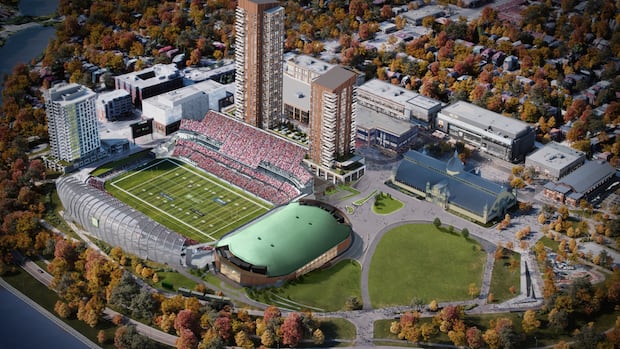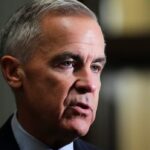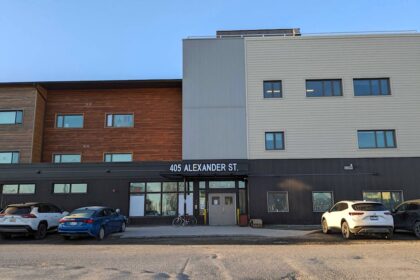Ottawa·AnalysisAs city councillors head toward a final vote on Nov. 7 that could change the terms of the city’s deal with the Ottawa Sports and Entertainment Group, a close read of the staff report suggests many pieces will have to fall into place seamlessly over many decades.LRT inquiry told the city to beware of optimism bias, underestimating riskKate Porter · CBC News · Posted: Oct 29, 2025 8:53 AM EDT | Last Updated: 1 hour agoListen to this articleEstimated 8 minutesThe Lansdowne 2.0 project heads to Ottawa city council for a final vote on Nov. 7. (City of Ottawa)Ottawa Mayor Mark Sutcliffe has sent emails to constituents, given speeches and done interviews in the past couple of weeks, confidently sharing the message that Lansdowne Park is a terrific investment for the people of Ottawa.The Lansdowne 2.0 project would see the city tear down and replace its aging northside stadium stands and arena in the Glebe with modern ones that are smaller, but meant to be a better fan experience. Two new towers would go up behind the roofless northside stands and the arena would go to the stadium’s east end, taking away much of the grassy hill.Sutcliffe has been promoting Lansdowne 2.0 as “a chance to get brand new public facilities for a fraction of the cost” and telling taxpayers they will pay slightly less than one-third of a $419 million project. The mayor says he’s doing this in part to counter a “misinformation campaign” he says is underway in the community that’s “deliberately misleading and twisting the facts.”The financials of the project might well come to pass as the mayor lays out. But as councillors head toward a final vote on Nov. 7 that could change the terms of the city’s deal with the Ottawa Sports and Entertainment Group (OSEG), a close read of the staff report suggests many pieces will have to fall into place seamlessly over many decades.Renderings of the proposed northside stands and new towers at Lansdowne 2.0. (City of Ottawa)The next nine days are supposed to be the moment when city politicians really dig into the details and dissect these financial plans.Key numbers from Ottawa’s final Lansdowne 2.0 reportPWHL says plans for Lansdowne 2.0 arena ‘not viable for us’Lansdowne 2.0, after all, is to be funded in large part by tower property taxes and development rights. It counts on the Ottawa Redblacks and 67’s making money over the next 50 years. Construction has to stick to schedule.This Ottawa council has a better roadmap than others for how to approach these kinds of major decisions: a judge delivered a raft of recommendations not even three years ago after a public inquiry into how things went wrong for Stage 1 of Ottawa’s light rail system.At this early moment in a project, when bids are in, Justice William Hourigan cautioned public entities to beware of two cognitive biases: one relates to being overly optimistic and the other is the tendency to think a project is unique.Optimism bias“Optimism bias,” Justice Hourigan wrote, is the “unconscious tendency to believe that bad possible outcomes on a project will not happen to them.” It leads people to underestimate project costs and risks, he wrote. Public entities need to use data about prior projects to account for this, Hourigan recommended.Rideau Transit Group’s former bid director laid out the concept on the very first day of inquiry hearings as he remembered submitting a price and meeting the city’s “affordability cap” to win the Stage 1 LRT contract.Optimism bias is a known phenomenon in big infrastructure projects, testified Riccardo Cosentino, and is one of the big reasons for delays and cost overruns. That matters for Lansdowne 2.0 because, as the city’s auditor general Nathalie Gougeon put it plainly in 2024: “The bottom line is that the city is responsible for the cost of construction for Lansdowne 2.0 and any cost overruns.” Being on time, on budgetAfter OSEG told the city repeatedly that too much of the financial risk of Lansdowne 1.0 fell to the private partners, part of the goal of Lansdowne 2.0 has been for the city to better share that risk.Staff lay out in their report just how disciplined and proactive the city will need to be during Lansdowne 2.0 construction. The arena comes first, followed by the stadium stands. The Redblacks are expected to be without northside stands for two seasons and fans will likely find themselves on temporary ones behind the end zones. The construction timeline would start right after council approves the project, with “substantial completion contractually set for Nov. 29, 2030.”A rendering showing part of the outside of the proposed new event centre, including an arena. (City of Ottawa)As for the builder, council is being asked to allow staff to sign on the dotted line with EBC Inc. Its bid was lowest at $315.98 million, and the city settled on a “final negotiated fixed price bid” of $312.82 million. The details of what the proponents actually bid on are not clear.Staff promised to post the construction tender publicly in its entirety to ensure transparency, but when the time came last June, the city’s chief procurement officer told CBC News the documents were shared exclusively with pre-qualified bidders.Chasing waterfalls of revenueThen there’s the significant question of how the city can cover the costs of Lansdowne 2.0 and live up to the mayor’s promise that taxpayers will shoulder only one-third. The city is relying heavily on its public-private OSEG partnership. That deal was originally supposed to end in 2044 but keeps being extended, first to 2054, then 2066 and now 2075.Lansdowne 2.0 should see the city take out $331 million in debt in 2030 and pay off a $118 million chunk of it through the “waterfall” of revenues flowing at Lansdowne — much of it more than a quarter century from now.City staff acknowledge in their report the worst-case scenario will be that none of that money materializes.The Redblacks and 67’s are a piece of that puzzle. The city projects the pro football and junior hockey teams will generate revenue until 2075, yet OSEG is only contractually obligated to keep the teams at Lansdowne until 2032. That clause doesn’t seem to be changing, even though dozens of the city’s agreements with OSEG are being modified.The risk of making projections over such a long horizon already worried the auditor general back when the OSEG agreement was only being extended to 2066.Lansdowne 2.0 could cost $74M more than city estimate, auditor general finds“Since the model projects financial performance up to 2066, it is difficult to say definitively whether assumptions that appear reasonable currently will remain as such given the extended time period,” Gougeon’s office wrote in June 2024. Meanwhile, Toronto-based developer Mirabella will pay $65 million for the right to develop the towers, the city says, which is much higher than anticipated.Staff also lay out that the Mirabella deal won’t close until July 2031. If Mirabella signs in the coming weeks, it has only to put down a $1 million deposit and another $4.7 million in December 2028. What if it walks away?Project uniquenessCity decision-makers might determine now is the time to upgrade city-owned facilities and bring them up to today’s accessibility standards and fan expectations. WATCH | Some accessibility frustration with the current space:Accessibility advocates lead tour of TD PlaceAccessibility advocates advising on Lansdowne 2.0 shared their frustrations with navigating the current arena in a wheelchair.Their vote on Oct. 22 to not even consider taking more time for a decision, even though an audit is due days before, might suggest which way council leans.“Lansdowne 2.0 is unique in that it will be a revenue-generating operation,” say city staff in their report to be debated this week, pointing to how the many “new revenues” that can offset the debt it takes out.But Justice Hourigan also recommended avoid “uniqueness bias” and thinking that a project isn’t comparable to others.Hourigan’s recommendations made their way into the Lansdowne 2.0 business case in 2023 and the procurement recommendations in 2024, but there’s no mention of the LRT inquiry’s lessons in this final report.Councillors will get to question staff in the coming days after they hear more than 60 public delegations weigh in at a committee meeting that could span multiple sittings.They’ll also have the benefit of the auditor general’s assessment of Lansdowne 2.0’s final costs and risks before being asked to approve contracts late next week. ABOUT THE AUTHORKate Porter does explanatory and analysis pieces about local issues for CBC Ottawa. She covered Ottawa City Hall daily for eight years, doing deep dives into development decisions, covering the LRT public inquiry and analyzing multiple elections and budgets. In her more than 20 years at CBC, she has also read the radio news and covered the arts beat.Follow Kate on Twitter
Wednesday, 17 Dec 2025
Canada – The Illusion
Search
Have an existing account?
Sign In
© 2022 Foxiz News Network. Ruby Design Company. All Rights Reserved.
You May also Like
- More News:
- history
- Standing Bear Network
- John Gonzalez
- ᐊᔭᐦᑊ ayahp — It happened
- Creation
- Beneath the Water
- Olympic gold medal
- Jim Thorpe
- type O blood
- the bringer of life
- Raven
- Wás’agi
- NoiseCat
- 'Sugarcane'
- The rivers still sing
- ᑲᓂᐸᐏᐟ ᒪᐢᑿ
- ᐅᑳᐤ okâw — We remember
- ᐊᓂᓈᐯᐃᐧᐣ aninâpêwin — Truth
- This is what it means to be human.
- Nokoma











